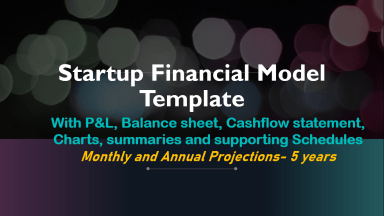
Last version published: 16/04/2024 07:44
Publication number: ELQ-57341-2
View all versions & Certificate

Startup 3-statement Financial Model
A 3-statement financial model for your startup + DCF Valuation.
Further information
1. To forecast business performance in the next 5 years.
2. Know business value, using DCF methodology.
3. Know whether a business idea is viable
4. Capital raising/fundrasing
Best when applied in startups who have several products and they know their selling prices and direct costs per product. You should be able to estimate the number of units sold at the start, per product, and how that grows with time.
Not ideal for e-commerce and other complicated business models.










